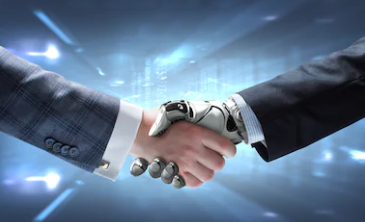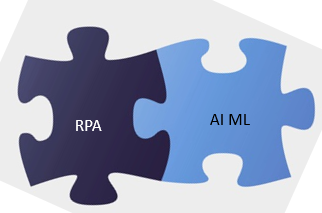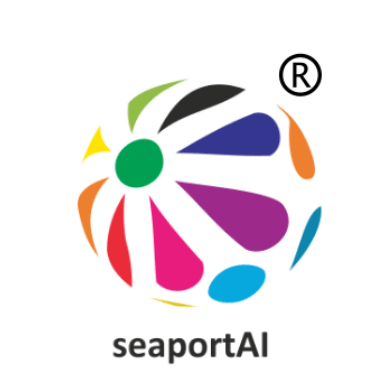RPA meets AI
Robotics Process Automation (RPA) and Artificial Intelligence (AI) based Machine Learning (ML) are two distinct technologies.
RPA is fundamentally a process improvement technology and is a re-branding of screen automation along with enhancements in functionalities. RPA attempts to automate rule based mundane repetitive tasks. Examples include invoice processing, data entry etc.,
ML on the other hand tries to predict the outcome by identifying patterns in data & information and the algorithm would self-learn over time to improve the prediction. Examples include predicting future demand, predicting customers who are likely to default etc.,
Businesses can derive immense value by harnessing the power of both these technologies.


Forecasting future demand is based on past consumption data, seasonality and other internal and external factors. In some cases, past data is not readily available and, in few cases, the data needs to be cleansed before using algorithms. In such scenarios especially when they are repetitive, RPA comes in handy.
In one of our demand forecasting deployments for a supplier to a large retailer, historical data which is used to determine the future forecasts were loaded in a central data warehouse and past data would get refreshed periodically. The data had to be retrieved first by logging into the data warehouse using the credentials and then choosing the relevant fields. This part of the activity involving login to the data warehouse and accessing the past data on a predetermined time at regular intervals was automated using RPA.
Once the data is downloaded in the local systems, machine learning algorithms were used to predict the forecast.
Thus, an end to end forecasting system was deployed which made the entire process faster and accurate.
Data extraction, data cleaning, report generation and report dissemination are manual repetitive tasks in the data analytics value chain. These are fit candidates for RPA and will make the process of data analytics faster, accurate and value adding to end users.
